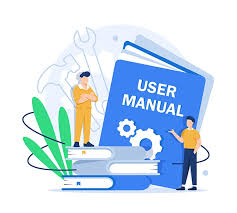When a company wants to grow internationally, clear communication is vital. In this context, manual translations become essential. User, technical, or installation manuals require accurate adaptation. Otherwise, errors can affect the customer experience.
Translating is not just about changing words from one language to another. It involves understanding the context, technical terms, and the text’s purpose. That’s why trusting professionals is key to achieving the best results.

Why is it so important to translate manuals correctly?
Many companies underestimate the value of a good translation. Nevertheless, a poor interpretation can cause product usage errors. In addition, it can lead to legal issues or even damage a brand’s reputation. This is precisely why professional manual translations are so important.
In contrast, a professional translation ensures the reader fully understands how the product works. Furthermore, it reduces customer support inquiries, saving both time and money. Above all, it improves the customer experience and significantly boosts brand trust.
Features of a good manual translation
A properly translated manual must be clear, concise, and easy to follow. In order to achieve this, the translator must understand the technical field. Moreover, they need to master the target language and follow its writing norms.
However, speaking English is not enough. Instead, writing clearly with appropriate language for the audience is essential. For instance, a manual for technicians uses different terms than one for general users.
Therefore, sentences should be short and direct. Additionally, avoiding long or complex phrases improves understanding. Likewise, accurate use of technical terminology is also crucial. Every term must keep its original meaning.
What types of manuals are translated most often?
Manual translations cover a wide range of documents. Common examples include:
- User manuals
- Technical manuals
- Installation instructions
- Maintenance guides
- Safety documentation
Each type requires a specific approach. That’s why it’s best to work with translators specialized in each field. A medical manual isn’t translated the same way as an industrial one.
Benefits of a good translation
A high-quality translation brings many benefits, such as:
- Better customer satisfaction
- Fewer product usage errors
- Stronger brand image
- Compliance with international regulations
- Easier entry into new markets
Professional translators often use assisted translation tools. These tools help maintain consistency and speed up the process.
Tips for choosing a good translation service
Choosing the right company or translator is essential. Here are some tips:
- Check their experience in manual translations.
- Ask for samples or previous work.
- Make sure they understand technical language.
- Ask if they use professional translation tools.
- Confirm that they offer proofreading and quality control.
Price is not the only factor. Quality should come first. Investing in a good translation is a smart, strategic move.
Conclusion
Manual translations are more than a linguistic task. They are an investment in quality, safety, and user experience. With accurate translation, a company can grow, expand, and stand out in global markets.
Choosing the right provider makes all the difference. If you’re planning to translate your manuals from Spanish to English, go with professionals. The results will speak for themselves.



